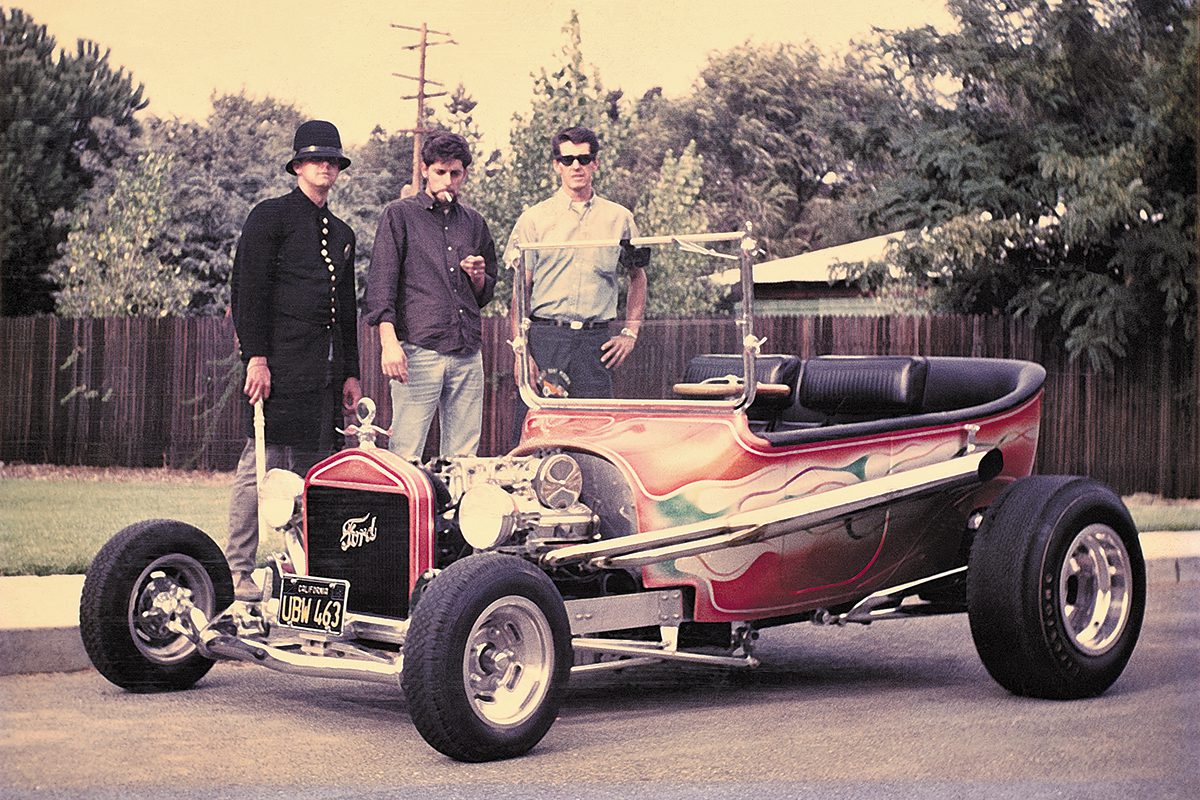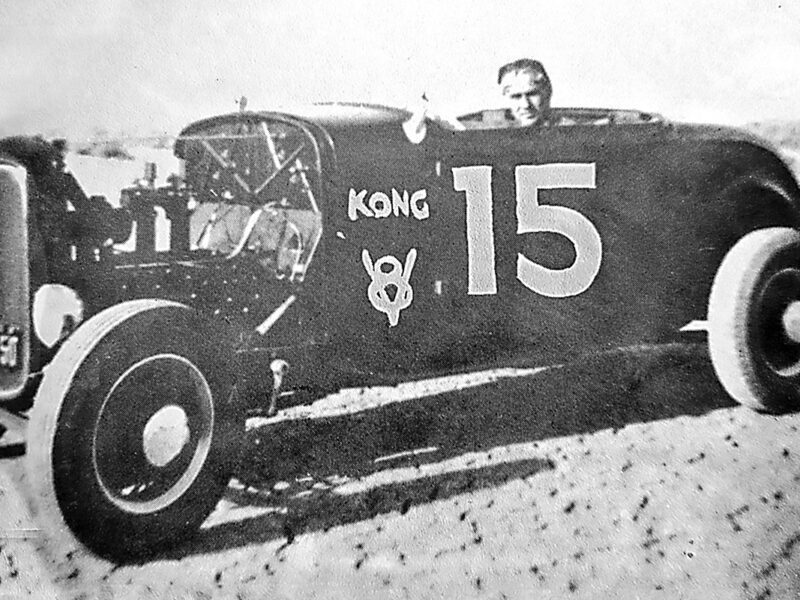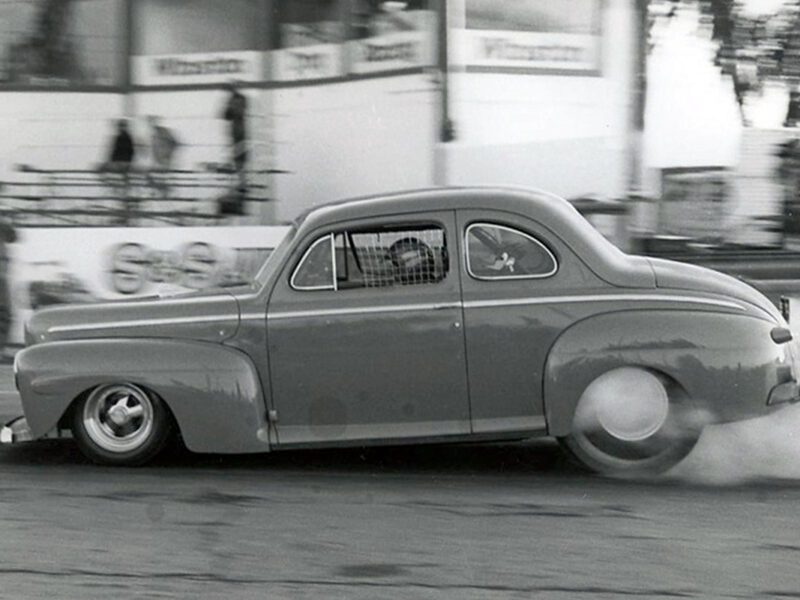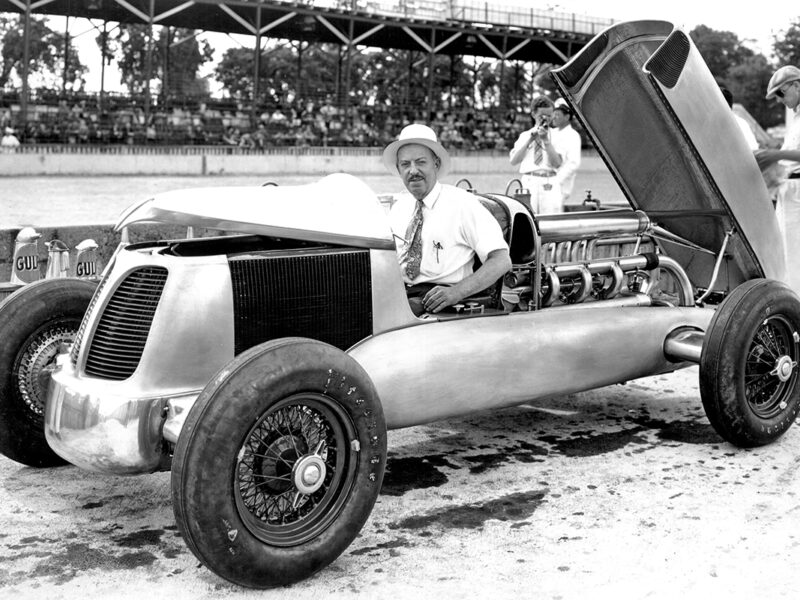Art Himsl – Rodding’s Top (Spray) Gun
Custom paint and intricate pinstriping have been essential elements in the ethos of hot rodding. Nearly every rod and custom flash a protective coat of gloss. If accented by detailed striping and vivid flames, so much the better. And few were – and are – better at creating such mastery than Art Himsl.
Art Himsl was born in 1940 in St. Cloud, Minnesota. Following his father’s retirement from the FBI in 1946, the family fled to the sunny shores of California. First stop was San Diego, followed by later a second move to the Bay Area suburb of Concord.
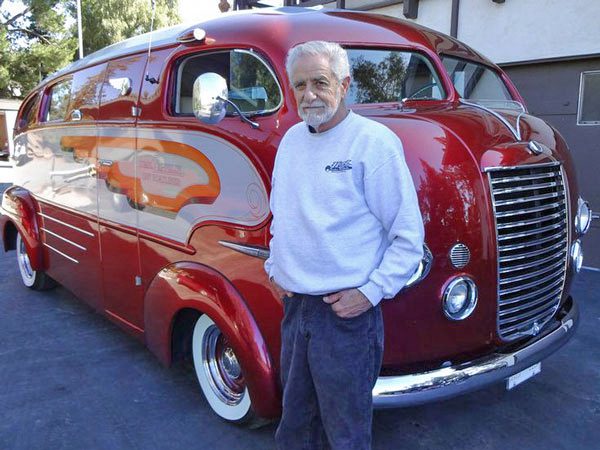 Cars caught Himsl’s imagination at a young age. He was that kid in the back row of class reading Hop Up tucked inside his textbook. He bought his first sword brush in high school and, inspired by the striping showcased in his covert reading material, Himsl quickly picked up the craft. (Von Dutch was a favorite.) Even before graduation, he boasted a handful of customers who embellished their rides with his handiwork.
Cars caught Himsl’s imagination at a young age. He was that kid in the back row of class reading Hop Up tucked inside his textbook. He bought his first sword brush in high school and, inspired by the striping showcased in his covert reading material, Himsl quickly picked up the craft. (Von Dutch was a favorite.) Even before graduation, he boasted a handful of customers who embellished their rides with his handiwork.
Himsl’s growing talent in striping prompted his followers to wonder if he could also paint their complete cars. A first, Himsl was dubious. Wielding a spray gun is far different than pulling an 1/8-inch line with a brush. But he took up the challenge, teaching himself, a process that included a stint at the College of Arts and Crafts in Oakland to study color theory.
By 1963, Himsl had refashioned his home garage into a makeshift paint booth and shop. But to pay the bills, he landed a job at Aerojet in nearby San Ramon. “During the day I’d work a regular job painting rockets, lab equipment, or white lines in the employee parking lot,” he once told Motor Trend. “At night I’d come home and pursue my true ambition: painting custom cars. This was my passion and by 1965 or so I realized Aerojet was buying my life for $3.75 an hour. I wasn’t doing what I really wanted to with my life.”
He rented a space in a downtown Concord industrial building, and lured a partner, Ned Stilinovich. Business slowly picked up, in step with his growing virtuosity with a DeVilbiss.
In 1966, Himsl pulled together his first original custom. It was a clever medley of disparate parts – a 1916 Dodge cowl, a T touring rear, and a fuel-injected Chevy V8 purloined from a Corvette. The underpinnings included an aluminum frame and a fuel tank from Aerojet. (Your tax dollars at work!) The hallmark of the car was its mind-blowing candy-with-fadeaway-flame paint job – so spectacular it earned the Oakland Sweepstakes in 1967.
Next came a custom that Himsl described as “the worst car I ever built.” He fabricated the body from plywood and ’glass atop a dragster chassis. The interior featured radically laid-back seating tucked under a Plexiglass roof – which, while looking cool, blocked the driver’s vision in nearly all directions. A dazzling Himsl-esque paneled-style green hid all that plywood.
“I liked the car so much that I sold it before the show was over,” Himsl explained later. Despite his lukewarm feelings about the car – nicknamed “The Alien” – it took home the 1969 America’s Most Beautiful Roadster trophy.
Himsl’s impact on the AMBR continued in 1970 when he repainted Brizio’s “Instant T” with a head-turning pearl white base and ribbon graphics. It, too, won the AMBR award. 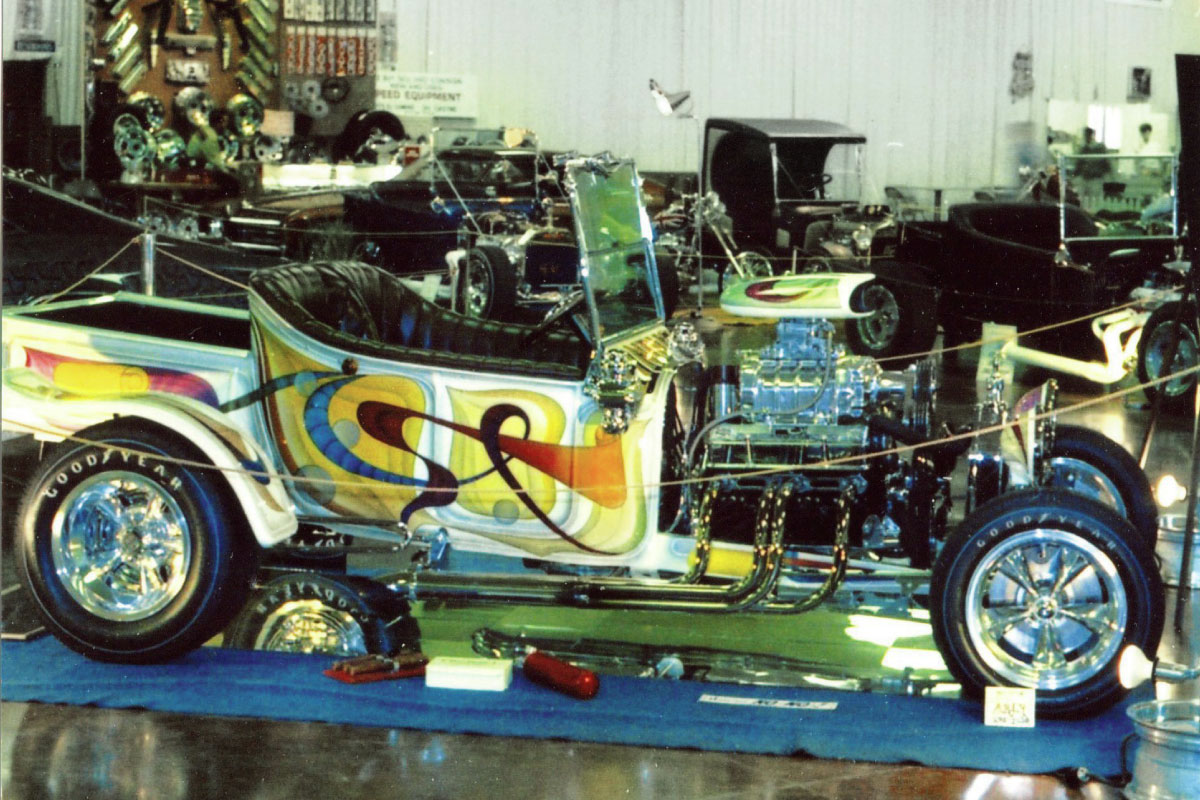 By the late-1980s, though, Himsl became bored with his work. That is until Brizio asked him to apply graphics to his Chevy Suburban. “All of a sudden it was fun again!” Art recalled.
By the late-1980s, though, Himsl became bored with his work. That is until Brizio asked him to apply graphics to his Chevy Suburban. “All of a sudden it was fun again!” Art recalled.
To recount all the cars and phases of Art Himsl’s career would take up an entire issue of the Gazette. He’s painted a working locomotive, motorhomes, speed boats, airplanes, helicopters, motorcycles, and more. One curious trend in the 1970s was the short-lived custom van craze. Himsl remembers it well. “We were doing something like 40 units a week,” he told the Gazette recently. “I hated vans, but I loved the money.”
Art’s accomplishments have been acknowledged by his peers. In addition to his AMBR awards, he earned Grand National Roadster Show Builder of the Year in 1995, and in 1992 was inducted into the GNRS Hall of Fame.
Himsl is now a spry 82 years old, still working in the same Concord shop. His voice is as strong as his motivation. And he’s still knocking out custom paint jobs. His talents are still in demand. “I’ve got so many people that want paint done and I have a hard time saying no,” he says. One he recently said yes to was flaming a ’40 Willys coupe being built by Brizio for none other than Eric Clapton.
When asked what personal trait was responsible for his success, a long pause followed. He simply said, “It’s all I know.”

